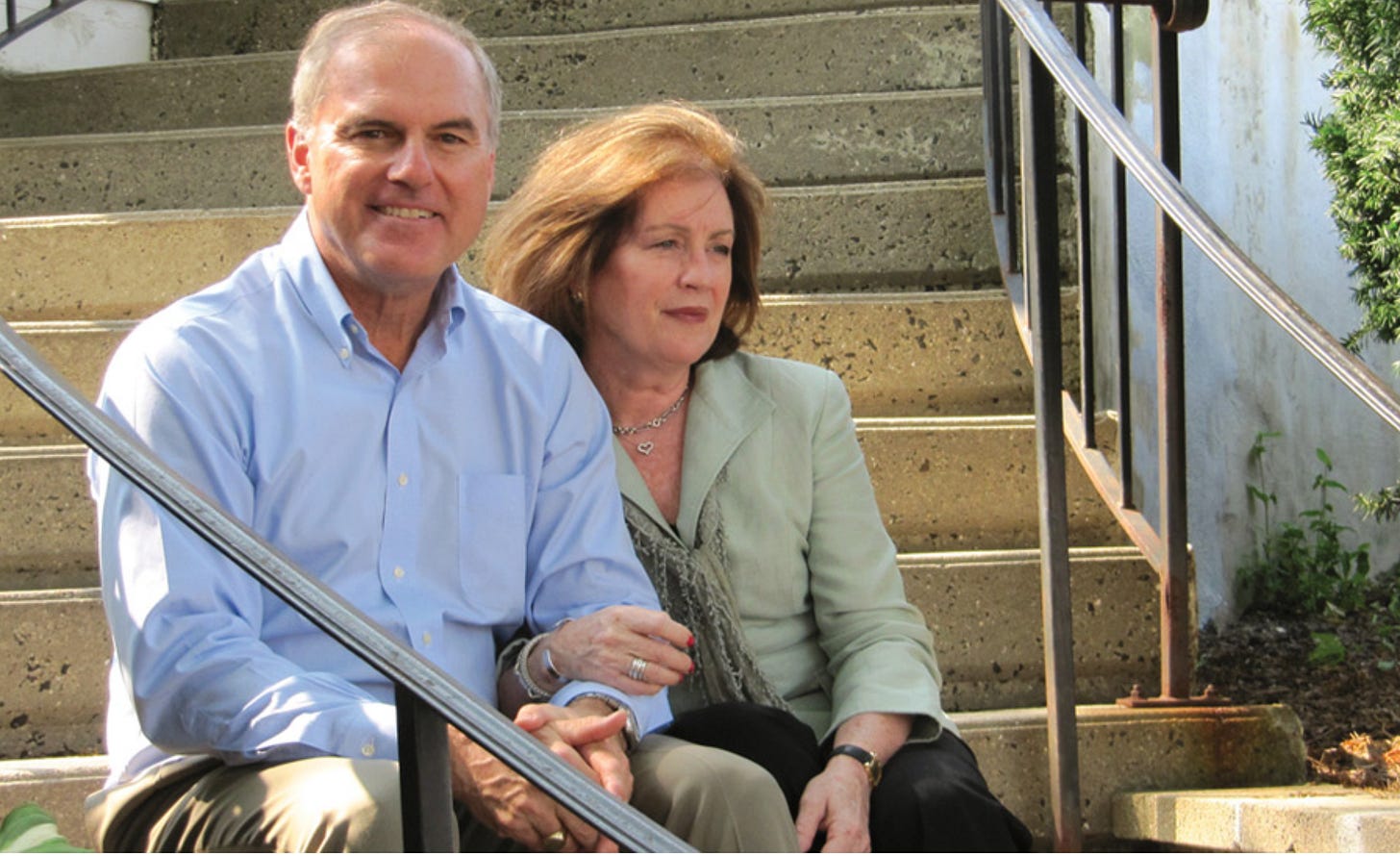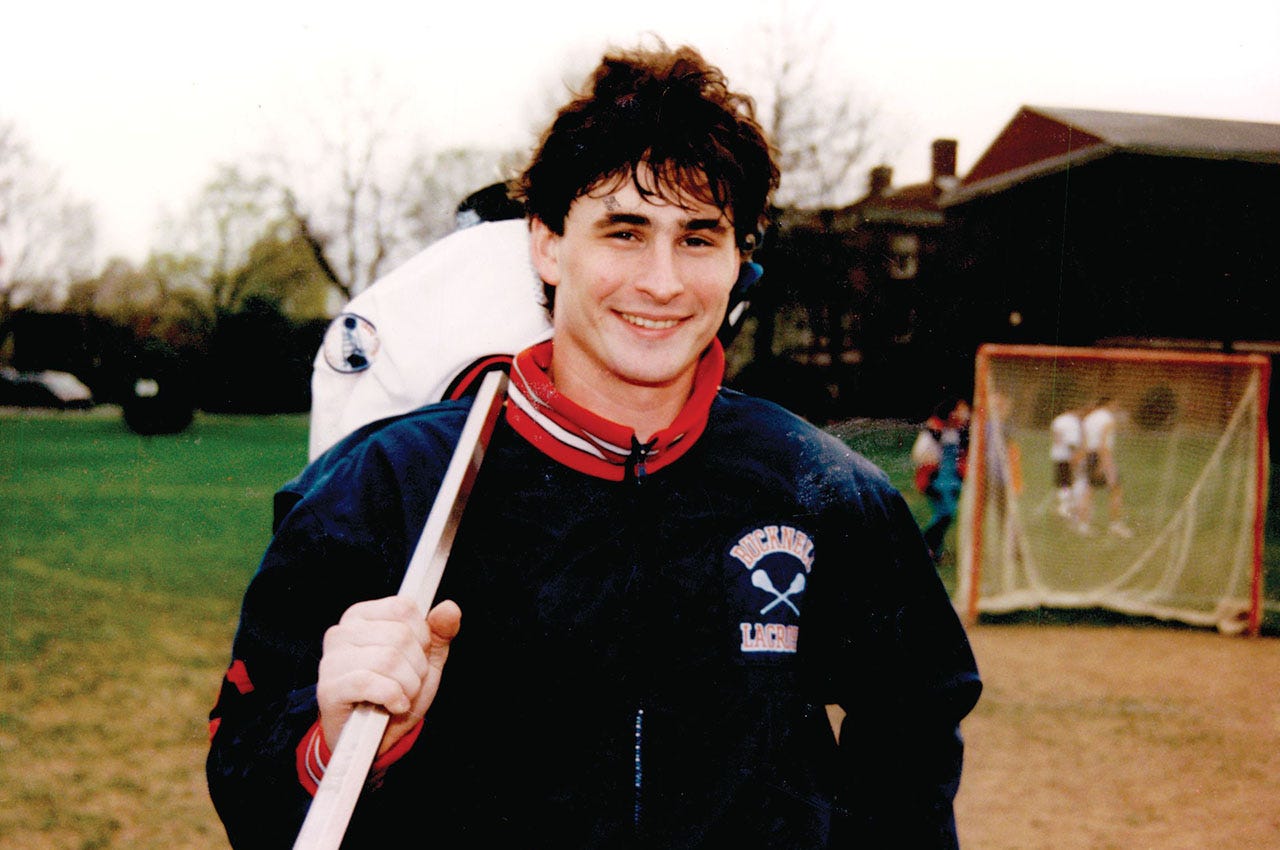Here is my story about Mary and Frank Fetchet who lost their son on 9/11. This article originally appeared in The Lawrentian, the alumni magazine of The Lawrenceville School.
Bright television camera lights hit the face of Mary Fetchet P’00. On March 31, 2003, she testified before the National Commission on Terrorist Attacks—better known as the 9/11 Commission—on its first day of hearings in New York City’s Custom House a few blocks south of the open wound where the Twin Towers stood and fell. Mary had never testified in public before, and never before had she prepared a written statement.
Nearly 20 years later she would look back and say “I’m a little mother from New Canaan. I knew nothing about intelligence reform, but I learned. Today I know a lot more than some of the people making policy decisions, which is frightening. That frightened me.”
Her son Brad, 24, the brother of Wes ’00, was working as an equities trader for the financial firm Keefe, Bruyette & Woods on the 89th floor of the South Tower (Building Two) of the World Trade Center on the morning of September 11, 2001, when al-Qaeda terrorists hijacked four commercial airliners. At 8:46 a.m. an American Airlines 767 struck the North tower. Seventeen minutes later a United Airlines 767 rammed Brad’s building between floors 77 and 85. He was unable to escape.
In the early days after 9/11 Mary, a clinical social worker, trekked into Manhattan from her New Canaan, Connecticut, home. She was shocked by the challenges thousands of families faced getting information and support. “As much as our nation was unprepared to prevent 9/11, we were equally unprepared to respond to a tragedy of this magnitude,” she says.
Within weeks, she and her husband Frank, an IBM executive, took action. They founded Voices Center for Resilience (formerly known as Voices of September 11th), a non-profit to help survivors’ families. For the last 20 years, it has provided more than 180,000 hours of social-service support for victims’ families—and first-responders and their families—through personal counseling, workshops, webinars, trainings and annual symposia. They also share their expertise with communities impacted by other mass casualty tragedies in the U.S. and abroad.
She soon joined 11 other families to form a family steering committee which championed the establishment of the 9/11 Commission. It led to sweeping intelligence-agency reforms, and Mary was “infuriated” to find resistance to creating the inquiry board. “The more information we found the more it was apparent to me and the families that systemic government failures contributed to the attacks on 9/11. I was shocked, horrified, that there was so much complacency,” she says.
On that day in the Customs House in her calm—some might say matter of fact— voice, she testified for nearly 15 minutes in terse, stern tones. This “little mother” dressed down the Commission’s members, 11 of the nation’s most powerful men and women whose number included its chairman Thomas Kean, the former governor of New Jersey, and former members of Congress.
Chastising them for the intelligence failures that led to 9/11, the communications debacles that day, and the needless loss of 2,766 lives, she told them that “No one in Building Two should be dead today.…September 11th should have been predictable. The loss of life in the 1993 [World Trade Center] bombing and the continued threats, specifically on the World Trade Center and other New York City landmarks, should have been the wake-up call.
“How could this happen, and who is accountable?” she asked the panel. “Our elected officials with oversight have neglected to implement prior commissions’ important recommendations to improve airline and national security….It is now 18 months later. We are at war with heightened alert, yet the Commission has had a slow start.”
During her testimony, Mary took out a framed 8 x 10 black-and-white photograph of Brad, a headshot in which he grins ear-to-ear. Setting it next to her, she said “I would like to share with you a picture which I took…” Overcome, she touched a finger to her lips. Pausing, she forces herself not to cry. A grimace of sorrow flashes on her face, and she continued, saying “….from his 15-year-old brother’s bedroom. Brad was an understated, athletic, handsome young man, as you can see from the picture, with a sparkle in his eyes and a wonderful smile.”
Her moment of weakness over and with people behind her weeping, she looked into the eyes of the Commissioners and said “It is incomprehensible that the devastation was so great that our families are being notified of minute body parts, such as a finger, a jaw, or a vertebra, or worse, nothing at all.”
She tells them about Brad’s journal and that its front page showcases a line which she says “best describes how he lived his life.” This quote from the German poet Goethe reads: 'You can tell the character of a man by what he does for the man who can offer him nothing.’
“I challenge you,” she concluded, “to approach this important inquiry with the same manner that Brad approached life—with an open mind and integrity.”
**
Mary says her life has two chapters—before 9/11 and after 9/11. Three years before that date, she heard a speech on the long-term needs of communities ravaged by mass violence. The speaker was another mother. Her daughter had died in the 1995 Oklahoma City bombing. Mary found it memorable, but it made no profound impression. “I found out the hard way I was naïve,” she recalls.
At a 10th anniversary event, Mary asked Hillary Clinton, who was a senator from New York on 9/11, “How did I end up in this position?”
“If not you, who?” Clinton replied.
“I've felt a moral obligation and a responsibility,” says Mary. “You can look the other way. We all make those choices.” She admires Mother Teresa, who makes her think about the challenges of being a public person. “I realized that it's not about you, it's about it. We're all here with an opportunity to have things work through us, as she did.”
Mary travelled to Washington hundreds of times to lobby for the Commission’s creation and later for passage of an intelligence reform bill. Although she and other family members made faux pas like taking elevators and trams reserved for members of Congress, “We learned quickly we had the moral authority. We refused to take ‘No’ for an answer,” she says.
The Center worked with New York City’s medical examiner to streamline the notification process, because untrained police officers were showing up on families’ doorsteps and causing further trauma. Today more than 1,100 families continue to wait to be notified that the remains of their loved ones have been identified. The Fetchets have been contacted five times.
Mary served on the advisory board that helped create the 9/11 Memorial & Museum. “We wanted the survivors’ staircase—the stairs where many survivors escaped—to be incorporated,” she says. “We wanted the names of those who died to be etched in stone, so the families would be able to touch them. We wanted a platform where you could proceed down to the footprints of the building. We wanted people to be able to stand on bedrock, and we wanted the footprints of the buildings to be preserved, because that was what was left of where the buildings once stood. We wanted the remains to be in a repository between the two towers.”
The Center later worked with the families of 1,600 victims for five years to create one of the museum’s core components—the Voices 9/11 Living Memorial Project. This online archive (which includes the six people and an unborn child who died in the 1993 World Trade Center bombing) contains over 87,000 photographs of those who died and personal mementos documenting their lives.
While compiling this digital archive, the Fetchets consulted with Dr. James Billington, the head of the Library of Congress. “He put his hand to his head and said, ‘You don't understand. You're cutting edge. There are no standards for doing what you're doing. Can you imagine what we would have if a mother impacted by the Civil War had taken on a project like this?’ ” Mary recalls.
Not grasping the enormity of what he was telling her, Mary says “I sort of shrugged her shoulders and thought, ‘What is he talking about? We’re going to meet with families. We’re going to scan photographs. We just want the archive to be searchable.’ ”
The Center is now creating a similar online memorial for the survivor and responder communities. Their numbers are far greater than those who died on 9/11. More than 90,000 people responded, and 400,000 people lived, worked or attended school in the area. Eighty-three thousand people are being treated for physical or mental illnesses as a consequence of exposure to toxins on 9/11 and its aftermath, according to the Center.
Mary is disappointed the federal government fails to invest in organizations that focus on trauma survivors’ long-term needs. “If somebody calls us today, we know what they've gone through the last 20 years. We have long-term relationships with the museum, the medical examiner, subject matter experts, and the World Trade Center Health Program, so we can connect them with resources and, most important, connect them with one another,” she says.
“We shepherd people in a fairly intimate way as they come forward,” says Frank, who retired from IBM in 2006 to become the Center’s vice president of strategy and operations. “We build trusting relationships. We are one of them. We are part of them.”
Resilience—what Frank defines as “the ability to bounce back”—is essential to surviving trauma. “One key message is that life is going to challenge us. We all try to control what we can control, and the surprises come. You decide how you take those on. People who are very committed to change can get engaged and make a difference,” he says.
“The Fetchets took the best strategy,” says Laurence Gonzales, the author of Deep Survival and two other books on overcoming crises. “The standard strategy recommended by psychiatrists who specialize in trauma is ‘work, work, work.’ Find someone worse off than you and help that person through the bad times. The more you take the role of rescuer, the less able you are to take the role of victim. Helping gives you power over events that leave you feeling powerless.”
**
Brad would be 44 if 9/11 had not happened. He attended Bucknell University, as did his younger brothers Wes and Chris. Like him, they majored in economics and played lacrosse. Brad often came to Lawrenceville to watch Wes play lacrosse and cheer for his team.
After the first tower was hit, the Port Authority told Brad’s company that its employees should stay in place because their building was “safe and secure.” Brad, believing that only a small plane had hit the North Tower, called his father to reassure him and left his mother this message:
“Hey, Mom, it’s Brad. I just wanted to call and let you know—I’m sure that you’ve heard or maybe you haven’t heard—that a plane crashed into World Trade Center One.
We’re fine. We’re in World Trade Center Two. I’m obviously alive and well over here, but it’s obviously a pretty scary experience. I saw a guy fall—out of probably the 91st story—all the way down. So, you’re welcome to give a call here. I think we’ll be here all day. I’m not sure if the firm is going to shut down for the day or what. Give me a call back later. I called Dad to let him know. Love you.”
This article was originally published in The Lawrentian, the alumni magazine of The Lawrenceville School of Lawrenceville, New Jersey.






Heartbreaking and inspiring. I think if I had been in Mary’s shoes and Hillary had said this to me:
“If not you, who?” Clinton replied.
I would have slapped her across the face and told her “YOU!”